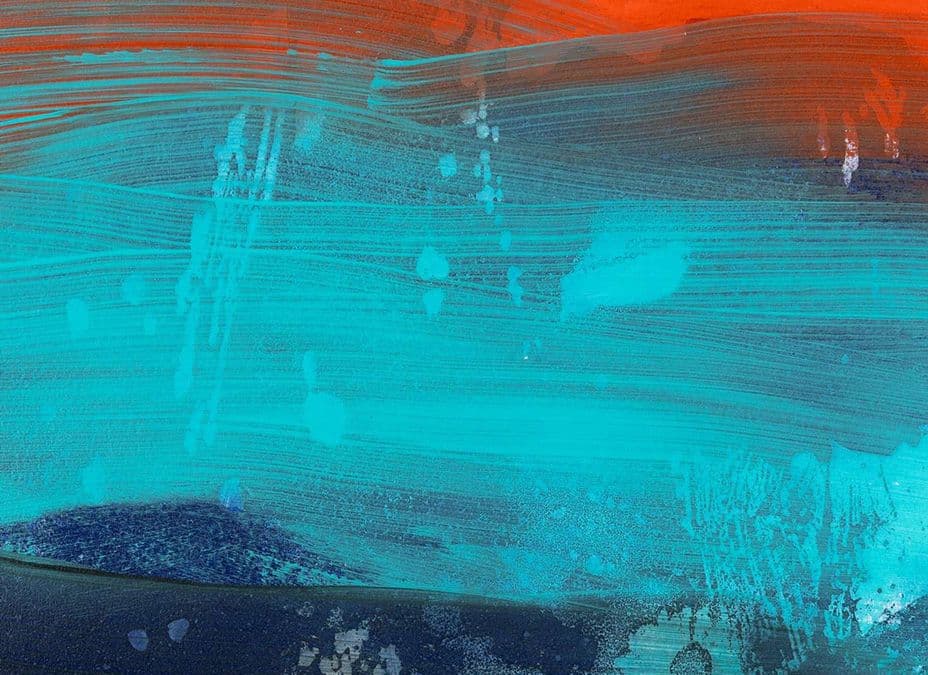The group of works presented here cover forty years of Aldridge’s career, from 1930 and one of the first of many visits to his friend Robert Graves in Deià on Majorca, to a pastoral scene near Great Bardfield of approximately 1970. It ranges across genres from landscape to still life and the interior in paintings and works on paper. A rare surviving example of Lucie’s rag rugs, Garden of c.1935, completes the collection.
Stream below Deià pays testament to Aldridge’s friendship with the poet and author Robert Graves, whom he met when Graves came to speak at Oxford University in the late 1920s. Aldridge graduated in 1928 and the following year Graves moved to Majorca with his partner, the American poet Laura Riding. The painting illustrates the idyllic setting described by Robjn Cantus thus:
‘The upside of living in Deià was that it was then remarkably beautiful and in the 1930s it would have been unspoilt and surrounded by olive groves and goat herds in a landscape part-worked with dry-stone walls; where the hills ended at a cliff precipice with their native dwarf palms, chamaerops humilis and ancient trees countered the flat blue sea and small bays of rocky coast. Water was from a well. Food without refrigeration was from the local land or sea. The ancient olive groves and orchards surrounding the town provided fruit and oil…The town had electricity from a generator that was turned off at ten o-clock in the evening and if you wished to work or socialise after then, it had to be done by oil maps or candles.‘ (Robjn Cantus, Before & After Great Bardfield: The Artistic Memoirs of Lucie Aldridge with a Postscript by Robjn Cantus, Inexpensive Progress, Cambridge, 2021, p.124).
Sea Kale of 1931 dates from the year during which Aldridge first showed with the Seven and Five Society. There is a touch of proto-Surrealism in the inclusion of the fragmented Classical head amidst with the titular vegetables and onions. A label on its reverse reveals that it was once owned by the noted collector Sir Michael Sadler (1861-1943); he was one of the first in Britain to acquire work by artists including Wassily Kandinsky and Paul Gauguin and did much to champion modern art in Britain, most notably via acquisitions made by Leeds City Art Gallery.










